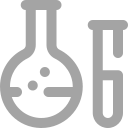
Product Description
Verbascoside is isolated from Lantana camara, acts as an ATP-competitive inhibitor of PKC, with an IC50 of 25 µM, and has antitumor, anti-inflammatory and antineuropathic pain activity.
IC50 & Target: IC50: 25 µM (PKC)[1]
In Vitro: Verbascoside acts as an ATP-competitive inhibitor of PKC, with an IC50 of 25 µM. Verbascoside shows Kis of 22 and 28 µM with respect to ATP and histone, respectively. Verbascoside has potent antitumor activity against L-1210 cells, with an IC50 of 13 µM[1]. Verbascoside (5, 10 µM) suppresses 2,4-dinitrochlorobenzene (DNCB)-induced T cell costimulatory factors CD86 and CD54, proinflammatory cytokines, and NFκB pathway activation in THP-1 cells[2].
In Vivo: Verbascoside (1%) reduces the overall scratching behavior incidence as well as the severity of the skin lesions in 2,4-dinitrochlorobenzene (DNCB)-induced atopic dermatitis (AD) mice model. Verbascoside also blocks DNCB-induced expression of proinflammatory cytokine TNF-α, IL-6, and IL-4 mRNA in skin lesions[2]. Verbascoside (50, 100 mg/kg, i.p.) does not modify chronic constriction injury (CCI)-induced cold allodynia. Verbascoside (200 mg/kg, i.p.) decreases hyper-sensitivity to cold stimulus, acetone, on day 3 in rats. Verbascoside also significantly reduces behavioral changes associated with neuropathy. Moreover, Verbascoside decreases Bax and increases Bcl-2 on day 3[3].

Information
CAS No61276-17-3
FormulaC29H36O15
Clinical Informationclinicalinformation
PathwayTGF-beta/Smad
Epigenetics
TargetPKC
PKC

Specifications
Purity / Grade>98%
SolubilityDMSO : ≥ 6.3 mg/mL (10.09 mM)
Smilessmiles

Misc Information
Alternative NamesActeoside;Kusaginin;TJC160
Observed Molecular Weight624.59